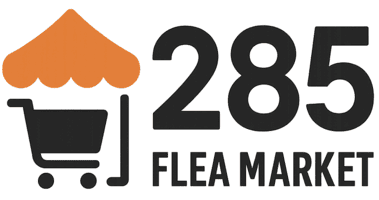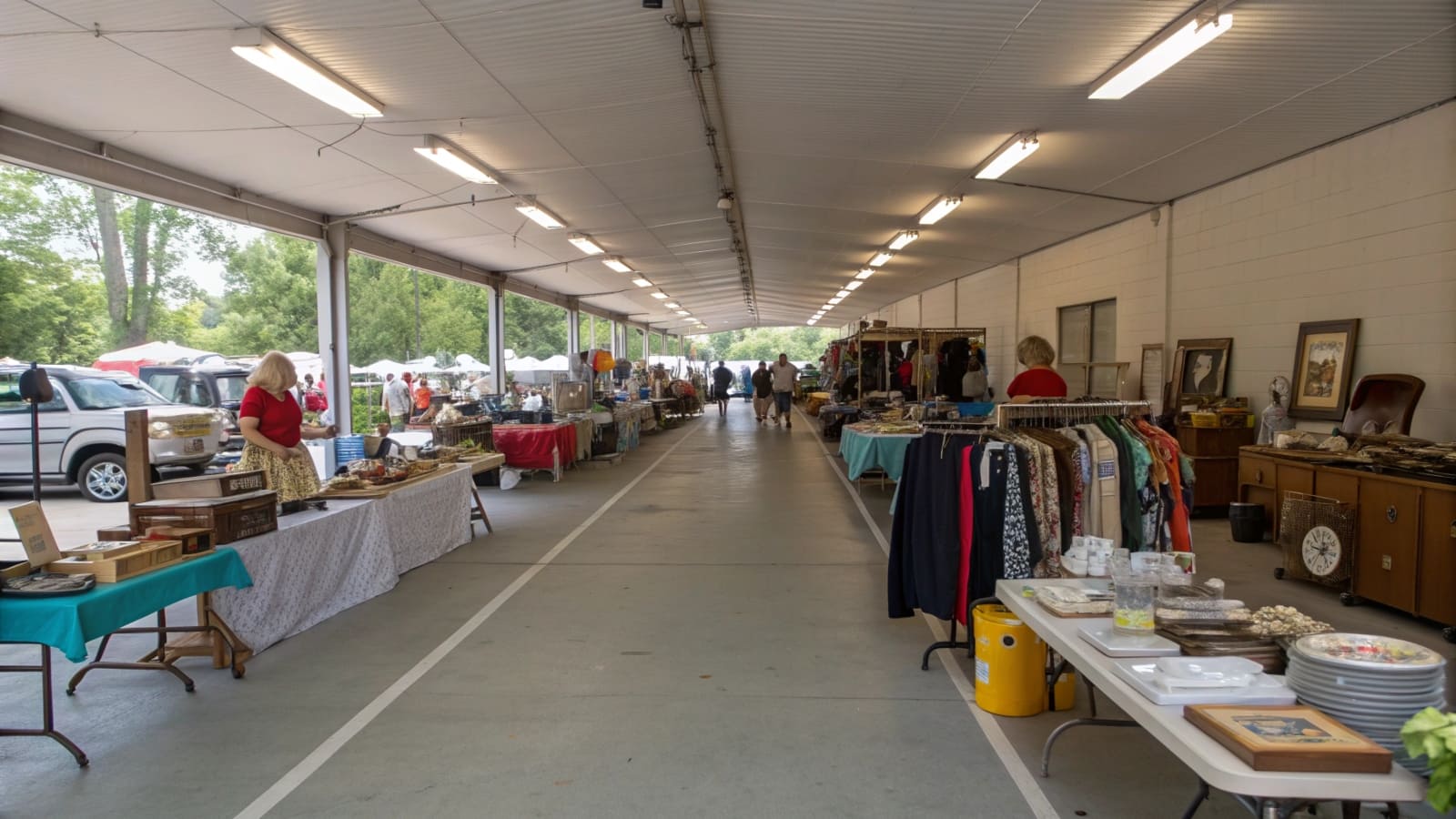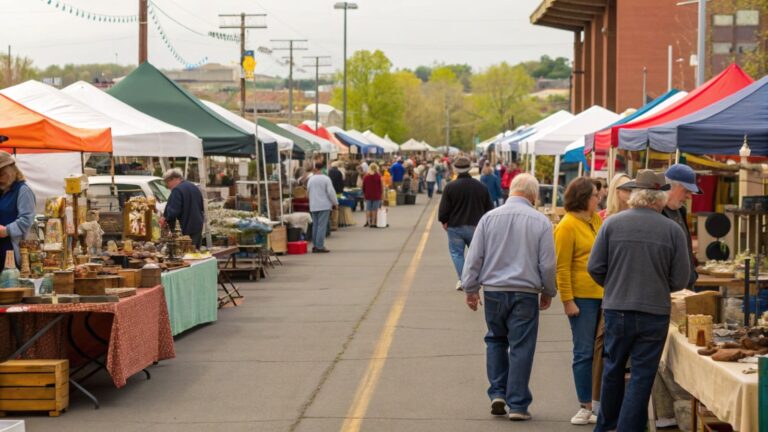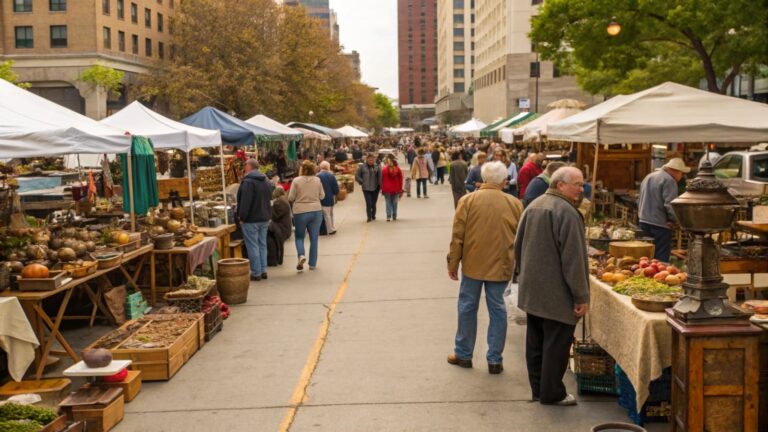Flea markets and yard sales. At first glance, they might look the same: old stuff, cheap prices, the occasional weird item that makes you pause. But they’re very, very different experiences. Understanding the distinctions can save time, money, and frustration, and sometimes, maybe even score a real treasure.
Comparison Table: Flea Market vs. Yard Sale
| Feature | Flea Market | Yard Sale |
|---|---|---|
| Atmosphere & Vibe | Crowded, noisy, chaotic, carnival-like energy | Intimate, casual, quiet, neighborly, sometimes awkward |
| Prices & Bargains | Often higher, haggling expected, strategy needed | Dirt cheap, random, first-come-first-serve, luck-driven |
| Variety of Items | Wide range: antiques, furniture, kitsch, collectibles | Random, everyday items: books, toys, electronics, sometimes gems |
| Quality | Mixed—some polished, some junk | Highly variable, often overlooked by seller, luck-based |
| Effort & Commitment | Requires planning, parking, navigation, stamina | Early mornings, walking lawns, timing critical, minimal planning |
| Social Interaction | Strangers, negotiation, eccentric characters, human theater | Neighbors, casual conversations, storytelling, sometimes awkward |
| Accessibility | Scheduled, maps, sometimes entry fees, organized | Spontaneous, scattered, street signs, word-of-mouth |
| Adventure Factor | High—hunt is part of the experience | Medium—thrill is finding random gems |
1. Atmosphere & Vibe
Flea markets are like a controlled chaos festival. Tents stretch endlessly, music blares unpredictably, smells of food trucks, incense, and old leather clash into something addictive—or nauseating. Sellers shout, customers bargain, toddlers cry, dogs bark, and the energy never dies. It can be overwhelming, but that’s the point: it’s a treasure hunt with a soundtrack.

Yard sales feel almost like sneaking into someone’s private life. Tables in driveways, boxes scattered like casual disasters, chairs for resting old bones. The sun beats down, conversations happen in murmurs, tension sometimes flares over a chipped mug. It’s slower, quieter, and oddly intimate. The unpredictability is… part of the charm—or the frustration.
2. Prices & Bargains
Flea market pricing is tricky. Sellers often inflate prices, then let you haggle. Sometimes you win, sometimes not. A rusty lamp could be $50 one table, $20 across the aisle. Haggling is a skill, a dance, sometimes exhausting, sometimes exhilarating.
Yard sales are the opposite. Dirt cheap, almost insultingly so. Records for $3, books for 50 cents, old toys practically free. No strategy needed, just timing, speed, and luck. The unpredictability is half the fun—sometimes it feels like stealing, sometimes it’s a complete dud.
3. Variety & Quality of Items
Flea markets: curated chaos. Furniture, antiques, kitsch, clothes, collectibles. Quality is mixed—some pristine, some decades-old junk. One moment a leather jacket fits perfectly; next, a plastic trinket falls apart at a glance.
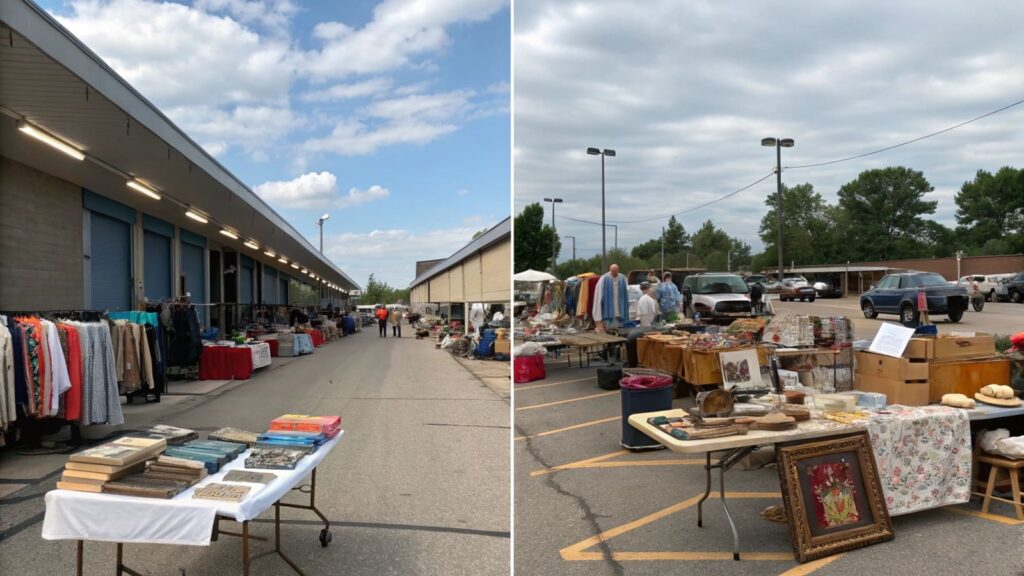
Yard sales: total lottery. Boxes of books may hide first-edition novels. Broken electronics might include extra parts that matter. Quality is highly variable, often overlooked by the seller, which makes for both disappointment and thrilling surprises.
4. Effort & Commitment
Flea markets: planning required. Parking can be a nightmare, entry fees sometimes apply, and wandering endless aisles tests patience and endurance. Expect to circle multiple times and still miss something important.
Yard sales: early mornings essential. Many gems are gone by 8:30 am. Minimal planning required, but wake-up time is non-negotiable. Walk across uneven lawns, dodge sprinklers, deal with sunburn, and somehow carry three boxes of stuff to the car. It’s short, intense, and chaotic in its own way.
5. Social Experience
Flea markets: the human theater never stops. Sellers push hard, buyers strategize, and odd characters abound. Some interactions are funny, some weird, some outright bizarre. Negotiation itself becomes part of the entertainment.
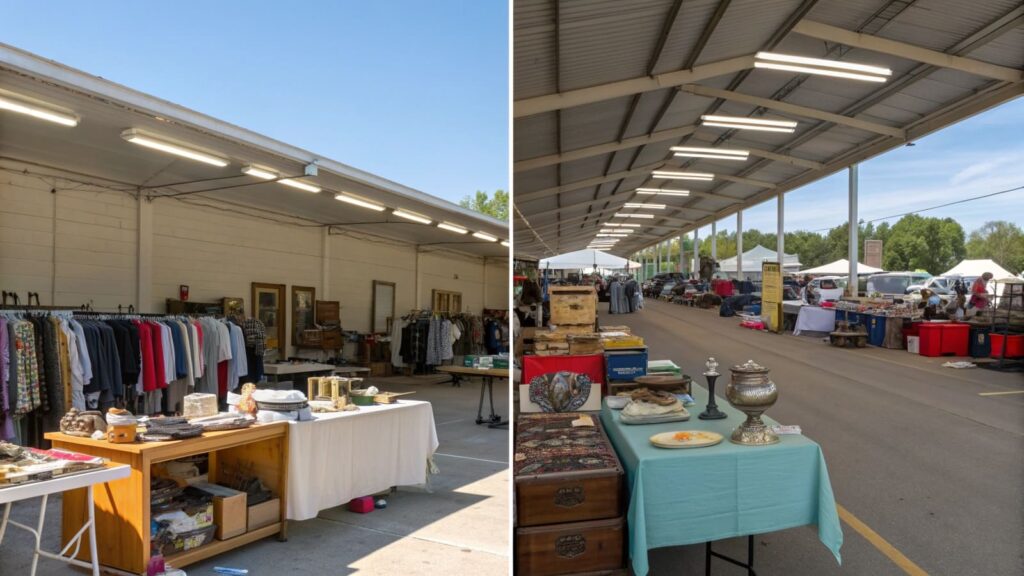
Yard sales: interactions are slower, closer. Neighbors talk, stories are shared, sometimes too much personal info. Awkward moments, laughter, minor disputes—social unpredictability thrives here. It’s a small human microcosm in each driveway.
6. Logistics & Accessibility
Flea markets: scheduled, mapped, sometimes with entry fees. Crowds peak midday, heat rises, patience fades. Parking, walking long distances, navigating organized chaos—all part of the ritual.
Yard sales: scattered and spontaneous. Word of mouth, street signs, neighborhood apps. Timing is critical. Miss a sale by an hour and the treasures vanish. Randomness rules.
7. Adventure Factor
Flea markets = full-on adventure. The hunt is part of the entertainment. You never know what bizarre, quirky, or expensive-looking item might appear next.
Yard sales = medium adventure. Less organized, less predictable, but surprises can be huge. That broken radio might actually be a rare vintage find.
FAQ
How early should I arrive at a yard sale?
If you want the good stuff, get there before most people wake up. Seriously. Some sales start at 6 a.m. or earlier. The first hour is chaos but also the only chance to snag the really rare finds. After 9 or 10, it’s mostly leftover junk.
Are flea market prices fixed or negotiable?
Mostly negotiable. A lot of sellers expect haggling, but don’t act desperate. Sometimes walking away makes them drop the price. Other times, they call your bluff. It’s part strategy, part theater.
Can I pay with card at a yard sale?
Rarely. Cash is king at yard sales. Some might have a Venmo or PayPal option, but don’t count on it. Bring small bills if you don’t want to make the seller dig through a messy wallet.
What kind of items are usually better at flea markets?
Flea markets often have antiques, vintage clothing, collectible toys, and furniture. Also weird, unique stuff you won’t find at a neighbor’s driveway. But some of it is overpriced—so keep an eye on quality.
Is haggling rude at a yard sale?
Depends. Some sellers expect it, some don’t. A polite offer is usually fine, but lowballing too aggressively can get awkward. Smile, joke a little, maybe offer “Would you take $5 for this?”—most people will laugh and counter.
How do I know if something is valuable?
Look it up quickly on your phone if possible. Signs of value include brand names, old materials, rare editions, or anything that seems out of place. If it looks like something everyone else has, it probably isn’t worth much.
Is it safe to visit flea markets alone?
Generally, yes, but keep an eye on belongings. Crowds can get dense, and pickpockets exist. Bring friends if you want someone to distract sellers while you inspect. Or just enjoy the solo hunt—totally doable.
Can I return items I bought?
Almost never. Both flea markets and yard sales are usually final sale. Some sellers might swap if there’s a mistake, but assume you’re stuck with it.
Should I bring my kids to a flea market or yard sale?
Depends on patience levels. Flea markets can be overwhelming and crowded, not ideal for toddlers. Yard sales are quieter but can still be tricky if kids start picking up everything. Snacks and distractions help.
How often do new yard sales appear?
Weekly, especially on weekends. Check local online boards, neighborhood apps, or even drive around—the random spontaneity is part of the thrill. Some neighborhoods feel like a never-ending treasure hunt.
Conclusion
- Flea markets: spectacle, organized chaos, negotiation, stamina, slightly stressful—but the adventure is part of the experience.
- Yard sales: intimate, unpredictable, cheap, early mornings, neighborly, sometimes awkward—but luck-driven thrill is undeniable.
The main difference isn’t what’s sold—it’s how it’s experienced. One demands strategy and endurance. The other thrives on spontaneity, timing, and pure luck. For the ultimate treasure hunter, knowing which adventure fits your style is everything.
